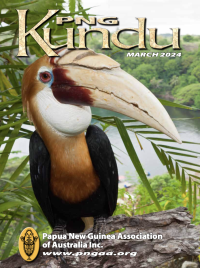The beginnings of Rugby Union in PNG: Dennis Bradney, MBE
Dennis Bradney was educated in Sydney and Brisbane (Sydney Grammar, Sydney Technical College and Brisbane Central Technical College) and worked for several Australian architectural firms before joining Comworks Port Moresby in 1964. He later joined the Port Moresby architectural firm of Higgin, Lloyd & Partners before forming his own company Bradney Higgins & Associates in Lae. He is an Honorary Life member of the Papua New Guinea Rugby Football Union and the Lae Bowls Club. Dennis received his MBE for services to sport and retired to Mission Beach, Queensland, in 2001.
I arrived in Port Moresby in November of 1964 to be surprisingly met at the Airport off the old DC6B by the guy that had been my best friend at school, Bill Kearney – now Sir William Kearney. Our Old Boys Union in Sydney had advised Bill that I was coming since I had been both Secretary of the Old Sydneian’s Union and Secretary of the NSW GPS Old Boys Association in Queensland. As such I had an immediate entrée to the known Old Boys of these schools in Port Moresby and of course these were the schools playing Rugby Union in Australia.
I was immediately prevailed upon to start a similar NSW Association in Port Moresby and over an initial formal Dinner at the bottom pub presided over by Dr John Gunther, and many beers, a decision was made to form a team to enter and stimulate the infant Rugby Football Union in Port Moresby. So the first expat team, to be known as the “Colleagues”, was formed.
I can’t attest to the accuracy of following but, as I understand it, Rugby Union had a very political beginning in Port Moresby in 1962. A number of nationals seen to be the intelligentsia and future leaders had been sent to Fiji for studies in the absence of adequate educational facilities in Port Moresby. In that stronghold they had learned to play the game of Rugby Union and on return home only had the opportunity to play the similar game of Rugby League. These people included Oala Oala Rarua, Himson Mulas, Nanandai Garo, Cromwell Burau, Reuben Taureka, Ray Basinauro and probably others I have forgotten of similar strong character. Unfortunately they had also been used to the social freedoms of Rugby in Fiji and took umbrage when they were denied entry to the PRL Club in Port Moresby to have a drink with expat players and this caused them to get together and to form a Rugby Union in Port Moresby.
They called on Don Westley, then teaching at the Teacher’s College, who had been the Captain of Eastwood Rugby Union in Sydney until suffering an horrific injury that put him out of the game. The start was made but it was a struggle and Don put in great effort, organizing, coaching, refereeing and doing whatever was necessary until in early 1965 Colleagues entered the scene and gave the game new impetus. At the same time in 1965, Dr Kerry Larkin who had played Representative Rugby in Australia for Queensland, his brother-in-law, Ric Wood, Dick Byers (who went on to be a respected International Referee), George Wearne, Royce Webb, Peter Emery, Peter Arava, Frank Wood, and myself also became involved in the administration of the code. Others like Fred Kaad, Paddy Erskine, John Gunther, David Chenoweth, etc., were often to appear on the sidelines in support.
1964 began with 5 teams in one grade but by half way through the year a Reserve Grade of a further 6 teams was included. 18 teams began the year in 1965 and during this year the game spread to the other centres of Lae, Rabaul and Goroka, with the 1966 season commencing with a total of 53 teams nationally.
There are many stories here but one I find a little disappointing is that of Colin Smee. Col, a former full back for Randwick, had returned to Australia from the USA a little down on his luck and had taken a contract to play League in Port Moresby and was amazed on arrival to find Rugby being played. After one year of League he opted out to referee for the Rugby Union and at the same time to apply for a clearance to return to Rugby Union as a player (times were different then!). At the beginning of the season he joined others in a pre-season clean-up of the Bava Street ground. While pulling out weeds he complained of being bitten by something but didn’t know what and by the next morning, a Sunday, Col had died probably from snake bite. The hearing for his clearance was already set down for the Monday and was still held and Col was cleared posthumously – probably the only time this ever happened in the game’s history. The Bava Street ground was named the Colin Smee Field. Very sadly the modern day PNG Rugby Football Union hasn’t seen fit to maintain this name.
As a footnote to the above, the following may be of interest –
When the University of PNG was first established and the first intake was housed in the Administrative College complex at Waigani, there was a quick desire to enter the Rugby Union competition and a joint meeting of students was held to discuss this and make the decision. The subject of a team name came up and the combination name of ADUNI was suggested and generally approved of until Joe Nombri with a customary deep chuckle suggested the alternative of ADVERSITY. I’m afraid that I steered that meeting back to ADUNI as the name and that was what it became.
I have regretted that for 40 years. Joe was absolutely right and belatedly I offer my apologies to David Chenoweth and Sir Joseph Nombri for my lack of both humour and vision.
Click HERE to view some photos of the beginnings of Rugby Union in PNG.



